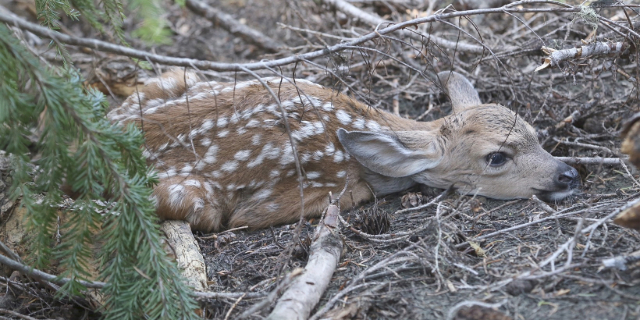‘A better understanding’: SOU Chinese history project gets half a million dollars
Published 4:00 pm Monday, April 22, 2024

- Chelsea E. Rose, director of Southern Oregon University's Laboratory of Anthropology, holds a shovel found in Eastern Oregon associated with Chinese miners.
A Southern Oregon University Laboratory of Anthropology program that uncovers the history of Chinese immigrants in early, rural Oregon has received a federal award of nearly half a million dollars.
The Oregon Chinese Diaspora Project will get $499,743 from a federal Labor, Health and Human Services program to improve postsecondary education.
“Everywhere we have taken the time to look, we are finding significant Chinese involvement,” said Chelsea Rose, director of the lab. “Now we know that there were communities everywhere in the state and folks were involved in major industries.”
SOU started the project in 2016. Since its inception, the project has uncovered information about — and artifacts from — 11 archaeological sites in five areas including mines, railroad camps and rural communities.
The investigations will fill gaps in the historical record, including for industries or regions that have been understudied. The project will include archaeological excavations, intensive surveys and analysis of orphaned artifact collections. The focus will be on the period from when Chinese people came to America during gold rushes in the 1800s through the early 20th century.
The most important aspect of the work has been the discovery of extensive Chinese involvement in the lives of towns and in industries, Rose said. Anti-immigrant policies in the early decades of the 1900s had much to do with the erasure of their history in those roles.
When Rose first began to study the early Chinese presence in Jacksonville, she was told there had been a few folks in the area. Digs and research in the town, however, revealed there was a thriving community.
About two-thirds of the funds allocated by Congress will be used for fieldwork and reporting, with most of the remainder earmarked for travel, curation and supplies.
One of the first explorations will be along the Oregon Coast and Columbia River to visit small history societies in towns that may have information on Chinese involvement in the fishing industry.
“We want to find out where the canneries were, where Chinese men and women were engaged in fisheries,” Rose said. A Chinese cannery site on the Columbia was excavated in the 1980s, but artifacts from that dig have yet to be studied intensively.
Other leads that will be studied with the funding include reports of a Chinese community in Lakeview, Chinese farming in Klamath County and mining in several areas of Eastern Oregon, including the Blue Mountains.
The project is focusing on rural areas because Portland and more metropolitan areas with larger Chinese populations have people who already known their histories, Rose said.
SOU students will be involved in the work, including archaeological digs. Citizen scientists will have the opportunity to embed with the students.
“If they want to come out and get dirty, that’s great,” Rose said. There will also be chances to work on exhibitions and other aspects of telling the stories.
SOU’s lab has already unearthed discoveries in several areas.
At the Kam Wah Chung State Heritage Site in John Day, the project has tracked down information on Chinese cowboys who helped establish the ranching industry in that area.
Research has been conducted on mining sites and commercial activities in Grant County.
In the Rogue Valley, the earliest Chinese quarter in the Pacific Northwest in Jacksonville has been studied extensively.
Working with the U.S. Bureau of Land Management, the project also explored the Buck Rock Tunnel, started by Chinese workers in 1883 to run a rail line over the Siskiyou Mountains to California east of the current tracks. The project was ultimately abandoned and another route selected.
U.S. Sen. Jeff Merkley’s office approached SOU about applying for the funds after Merkley and his staff heard about the project and thought it might be a good fit, Rose said. The measure was supported by Merkley and U.S. Sen. Ron Wyden, a fellow Oregon Democrat.
“Folks all along the way saw the value in a better understanding of the history of Oregon,” Rose said. The funding is more than double all previous awards to the project over its eight-year history.
“We have been lucky to get a lot of good support in dollars and in kind, but this money is a big sum all at once and doesn’t have strings attached like other funds,” Rose said. “We can do big, bold and exciting things to move it forward.”
SOU has worked on the Oregon Chinese Diaspora Project with agencies that include the Medford District of the Bureau of Land Management, the Malheur National Forest, the Rogue River-Siskiyou National Forest, Oregon State Parks, the Oregon Historical Society and the Portland Chinatown Museum.
Last fall the project won an award from the National Trust for Historic Preservation. In June 2022, it received a national Award of Excellence from the American Association for State and Local History.
An advisory committee of six members from different disciplines help inform and guide the project.
Information about the Oregon Chinese Diaspora Project can be found at oregon-chinese-diaspora-project-sou.hub.arcgis.com.






